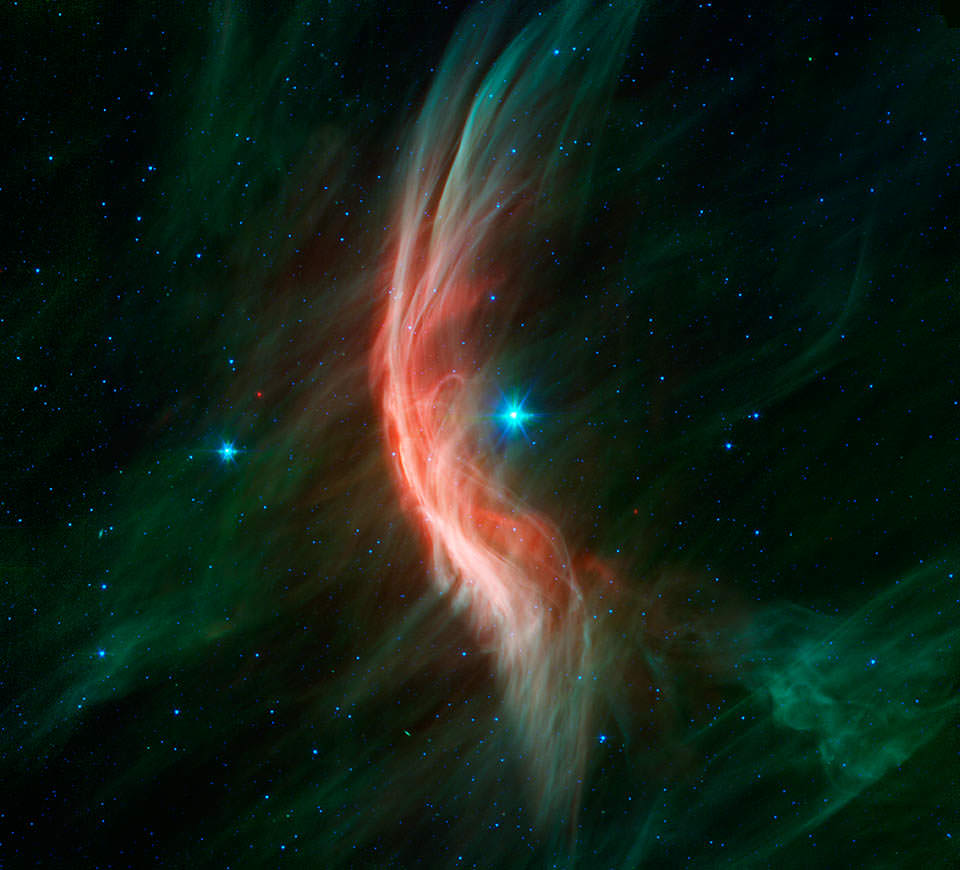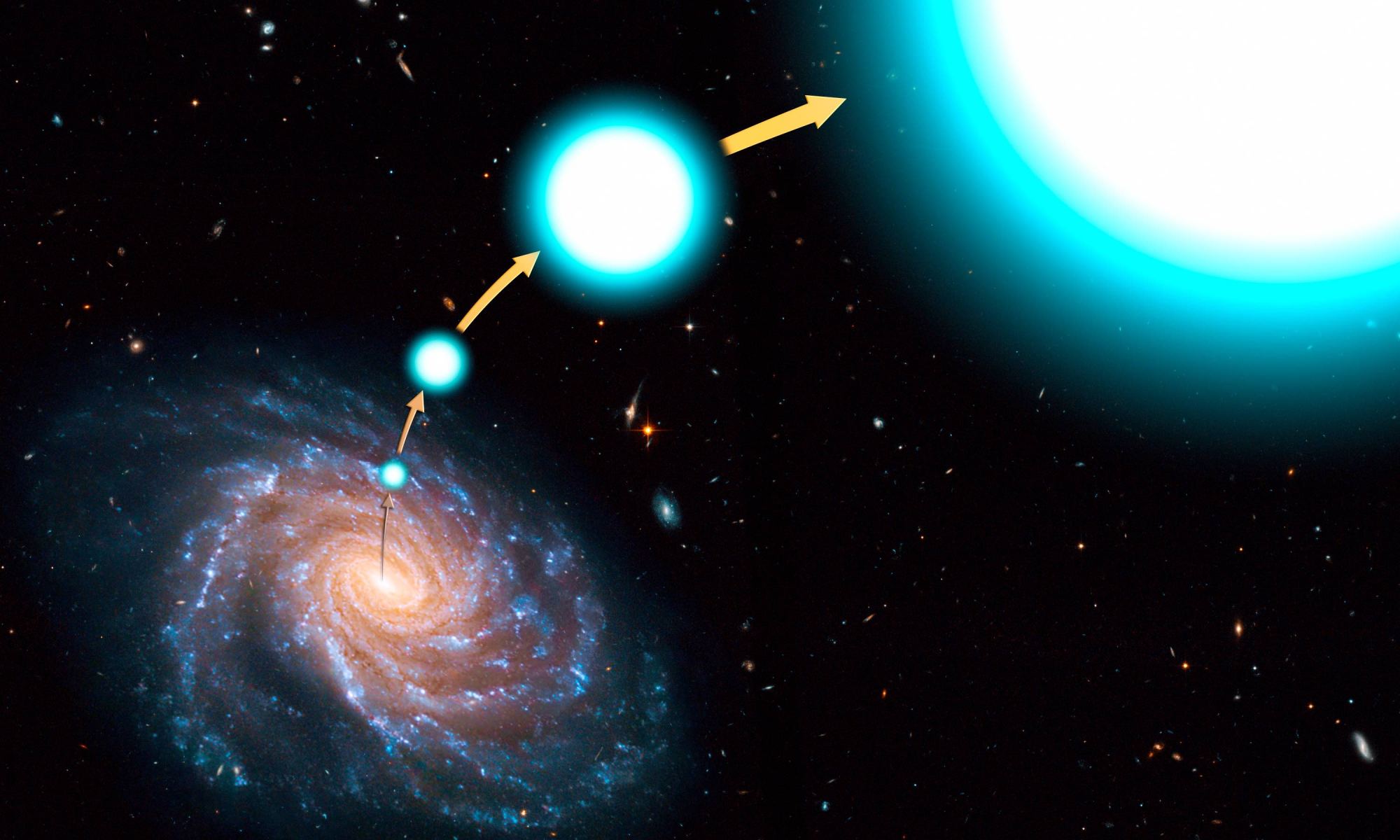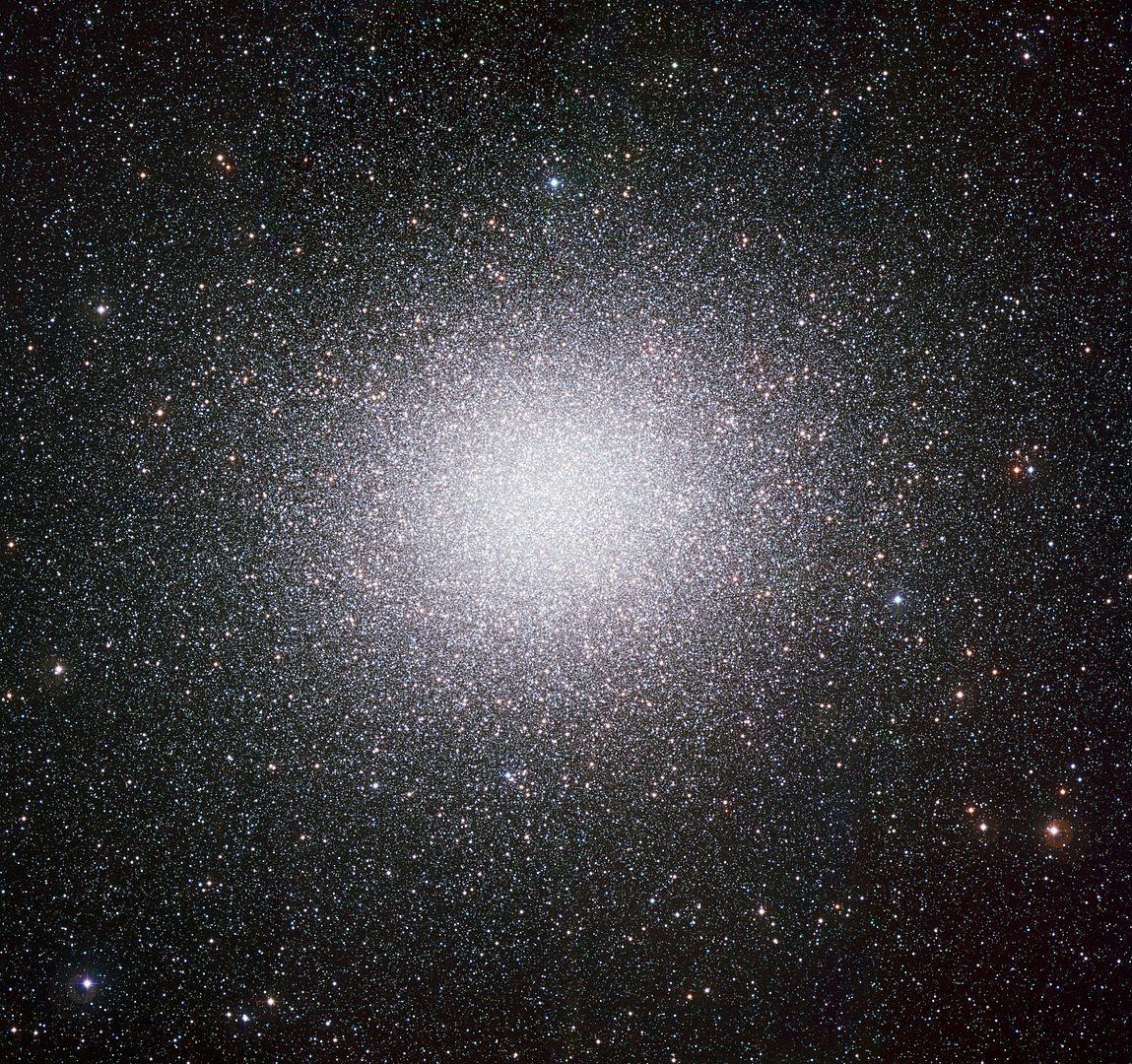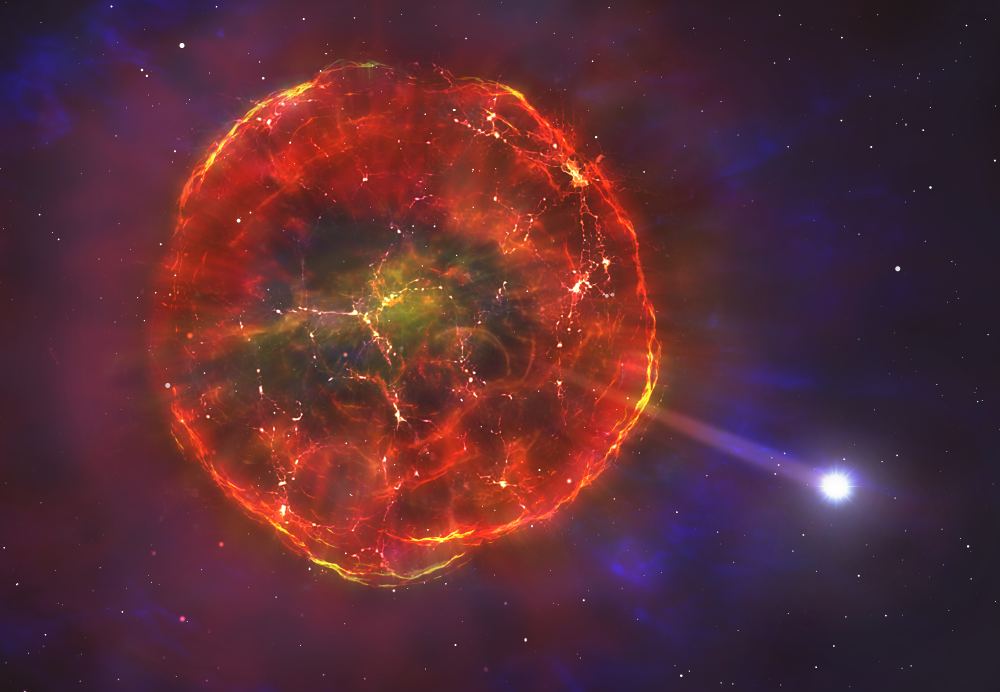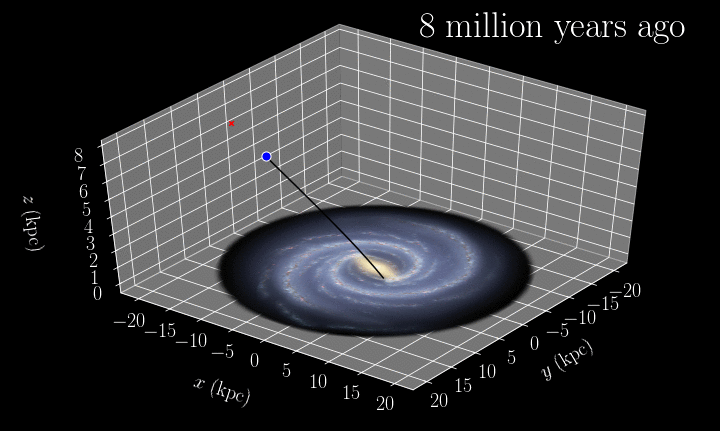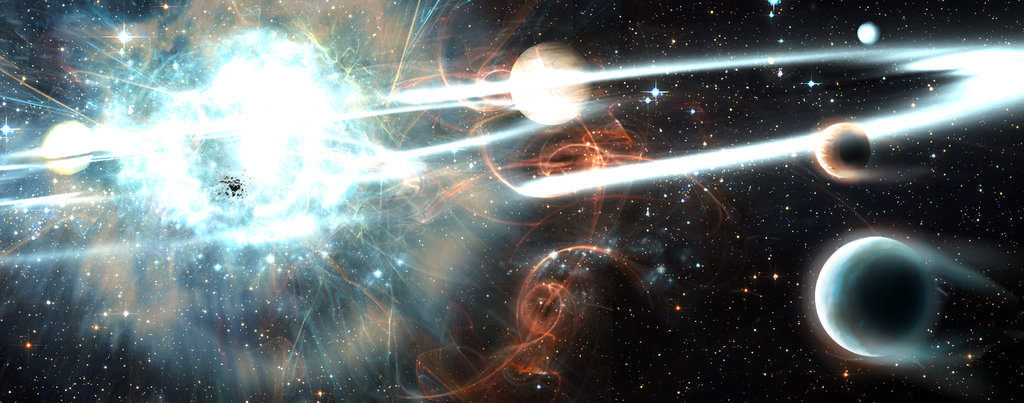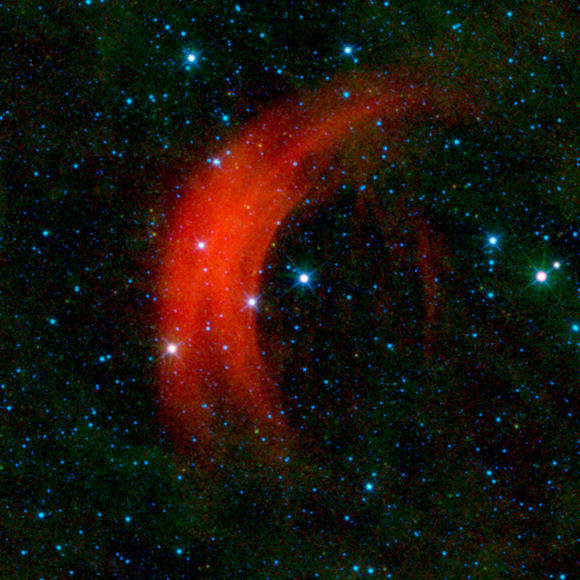[/caption]
Faster than a speeding bullet, this supergiant star looks like it might be wearing a red cape. Alpha Camelopardalis, the bright star in the middle of this image, is a runaway star, moving at incredible speeds – astronomers believe could be zooming along at somewhere between 680 and 4,200 kilometers per second (between 1.5 and 9.4 million miles per hour). The speed of this star is so fast, a huge bow shock is being created as the star moves through space. Alpha Cam’s bow shock can’t be seen in visible light, but WISE’s infrared detectors allow us to see this arc of heated gas and dust around the star.
Runaway stars are kicked into motion either through the supernova explosion of a companion star or through gravitational interactions with other stars in a cluster. The WISE team explains the bow shock:
“Because Alpha Cam is a supergiant star, it gives off a very strong wind. The speed of the wind is boosted in the forward direction the star is moving in space. When this fast-moving wind slams into the slower-moving interstellar material, a bow shock is created, similar to the wake in front of the bow of a ship in water. The stellar wind compresses the interstellar gas and dust, causing it to heat up and glow in infrared.”
Just as astronomers aren’t quite sure about the speed Alpha Cam is traveling, its distance is also somewhat uncertain, but it is probably somewhere between 1,600 and 6,900 light-years away. It is located in the constellation Camelopardis, near Ursa Major. (Right ascension: 4h 54m 03.0113s, declination: +66° 20′ 33.641”)
The colors used in this image represent specific wavelengths of infrared light. Stars are seen primarily in blue and cyan (blue-green), because they are emitting light brightly at 3.4 and 4.6 microns. Green represents 12-micron light, primarily emitted by dust. The red of the blow shock represents light emitted at 22 microns.
Source: WISE
